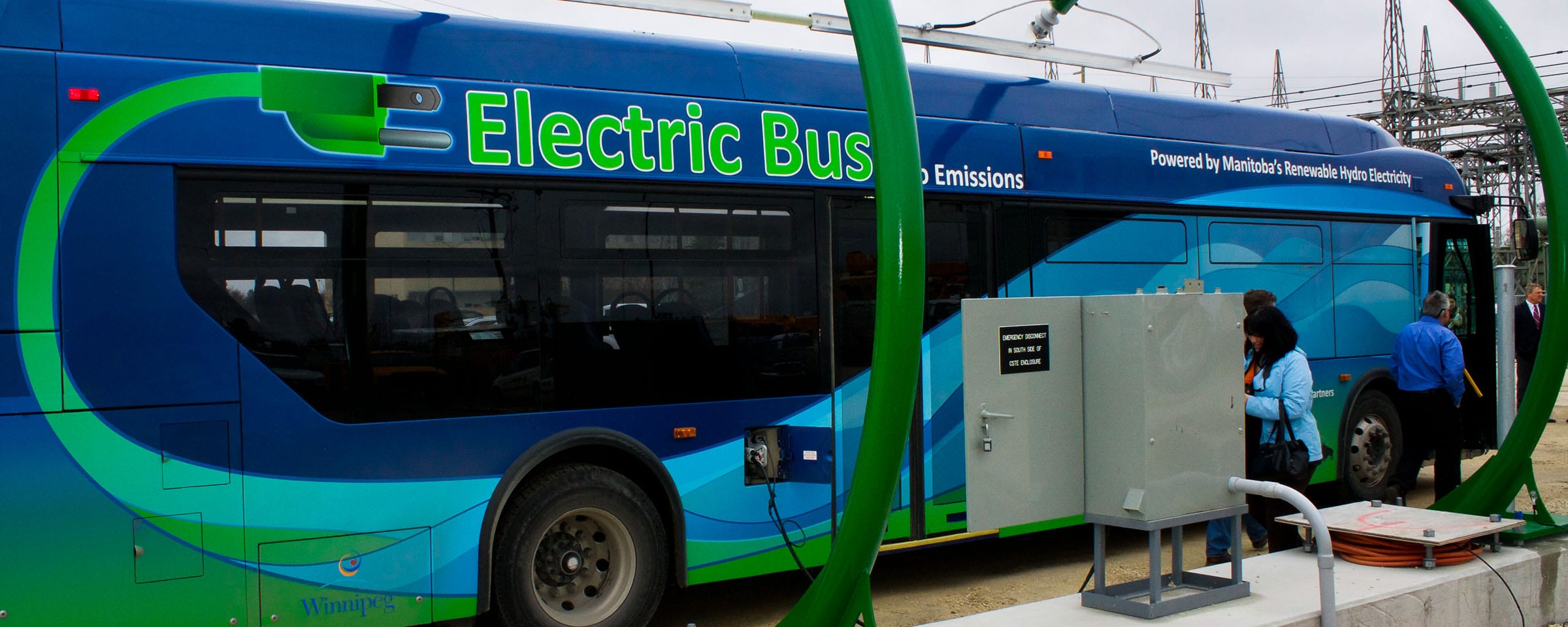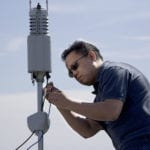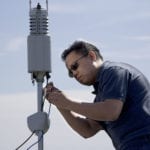RRC, U of M, and Manitoba Hydro unveil solar troughs

This week, Red River College (RRC), the University of Manitoba, Manitoba Hydro, and the Natural Sciences and Engineering Research Council of Canada (NSERC) unveiled the parabolic solar trough project. The unveiling also marked the beginning of first-of-its-kind research into investigating the feasibility of using the troughs to capture heating energy in Manitoba’s cold climate.
Located at RRC’s Notre Dame Campus, the project features an array of eight parabolic solar troughs arranged in two rows designed to concentrate solar energy for heating and cooling purposes.
The parabolic troughs concentrate the sun’s energy using long, curved reflectors (mirrors). Installed in an east-west axis, they track the sun throughout the day, focusing sunlight on a glass-enclosed metal tube running the length of the mirrors. The reflected sunlight heats a heat-transfer fluid flowing through the tube.
Parabolic solar trough systems have typically been deployed in warm, sunny climates such as California and Spain where they are used to generate electricity year-round. However, in Manitoba it may be more advantageous to use solar thermal-energy directly for heating and cooling applications rather than producing electricity. This is due to Manitoba’s shorter winter daylight hours, increased heat loss due to cooler ambient temperatures and reduced solar irradiance in winter.
Solar thermal parabolic trough quick facts
- First phase with eight troughs fully operational in 2013
- Potential for second phase including an additional set of eight troughs
- Trough supplier: Abengoa Solar; trough fabricated in Denver, CO
- Total trough length: 50 m
- Total mirrored aperture area: 106 m2
- Total trough-site area: 1,900 m2
- Heat-transfer fluid: Therminol 59
- Winnipeg is the second sunniest major Canadian city, with just under 2,400 hours of bright sunshine in an average year.
- The peak output of eight solar troughs is equivalent to the energy supply needed to heat eight to ten Manitoba homes on a typical winter day. Additional research will quantify how much energy the solar trough can capture to provide for longer-term seasonal heating needs.
- The peak thermal output of the eight solar troughs is equivalent to the electrical supply required to power 5,000 LED lamps that produce the same output as 1,000 conventional 100-watt bulbs.
Click here for more information on RRC’s Sustainable Infrastructure Technology Research Group.
Links to coverage from Monday’s unveiling are below:
Winnipeg Free Press
Metro Winnipeg
CTV Winnipeg
CBC













